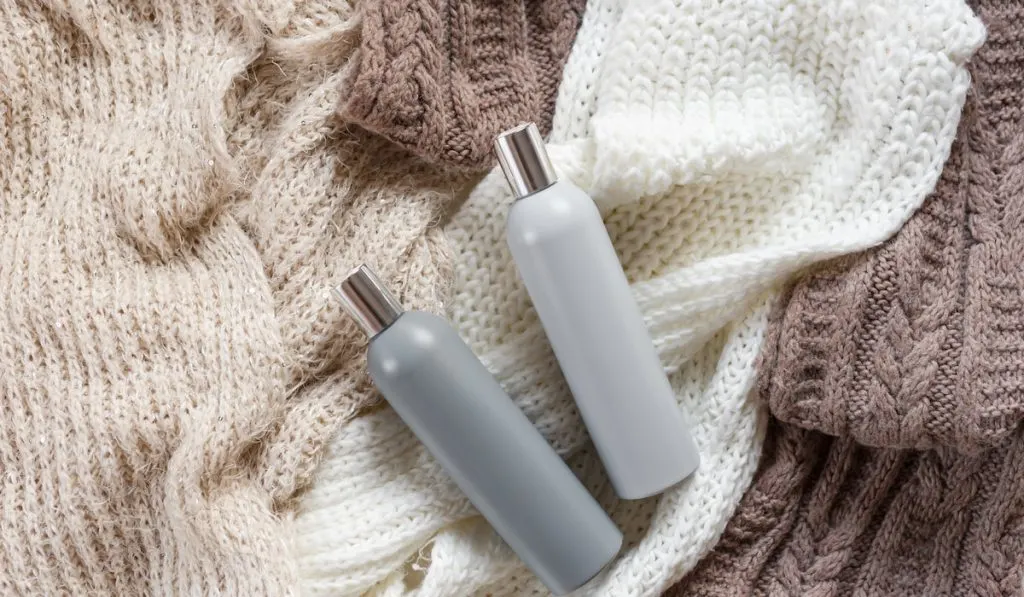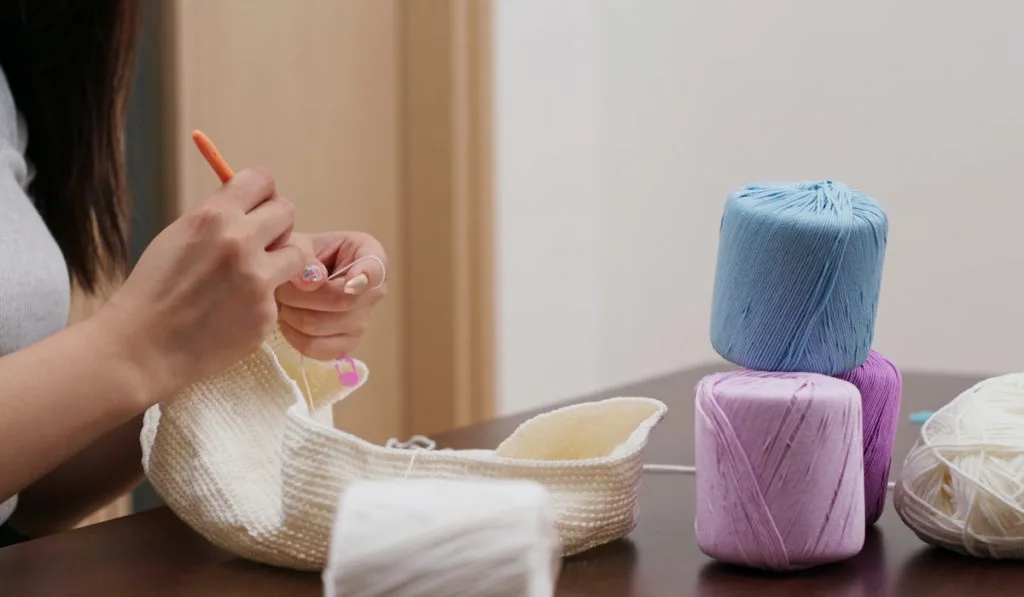No doubt, blocking your crochet can raise its appeal significantly. But knowing the agitation that comes with washing fabric, you may think that your blocked crochet will lose shape if you wash it. But is this really true?
Can you wash crochet after blocking?
You can wash crochet after blocking. At its simplest, blocking is washing the crochet and securing it in a fixed position to dry. So, if you wash your crochet and leave it at a fixed point to dry, you may not be undoing much of the initial blocking.
In this detailed care guide, we give more answers to the question, “can you wash crochet after blocking?” We also talk about different methods of blocking crochet and more.

What is Blocking?
You can wash crochet after blocking.
Blocking basically involves wetting or washing your crochet fabric then pinning in a fixed spot to dry. It is not very much different from regular washing. So, in many cases, if you wash your crochet after you block it, it should still be okay.
One exemption to this is lace crochet.
Lace crochet has many openings between the stitches. So, it is less likely to resist the agitation from washing. This is why you should block lace and lace-like crochet projects after washing.
The primary goal of blocking crochet is to set a proper shape, maintain flow, and make stitches look even. But since lace crochet readily deforms like lace fabric, the effect of blocking dissipates after washing. As a result, you will have to block them again after washing.
The good news is blocking is not a complicated process. So, having to block your lace crochet every time you wash it should not be a problem.
Is It Okay to Block Every Crochet Project?
You can block every crochet project if you want. But you will find that with some projects, blocking is not necessary.
For one, amigurumi crochet projects do not need blocking. They are most likely already in the needed shape. So, blocking would be unnecessary.
Besides amigurumi, you may choose not to block crochet projects like beanies and hand gloves. These types of crochet projects take shape as you wear them. So, blocking is not compulsory.
However, if the crochet has some complex stitches or if the stitches have tension issues, you may block the crochet.

Which Crochet Projects Must I Block?
With some crochet projects, blocking is vital. Some of these projects include:
- Lace and lace-like crochets
- Garments
- Finished blankets
- Square blankets
- Shawls
- Scarves
- Filet crochets or open-work crochets
Should I Block My Crochet Before Finishing the Ends?
You should block your crochet project before finishing the ends. Doing this instead of blocking after finishing offers a better look.
The finishing stitches will resist blocking if you wait to block after finishing the ends. As a result, the ends will be uneven.

How to Block a Crochet
When blocking a crochet project, you want to make it very damp before stretching it to shape and pinning it to dry.
Below, we will discuss 3 ways to block a crochet project:
Steam Blocking
Unlike other methods, steam blocking uses water in the form of steam. Also, unlike the other 2 methods, you must pin the crochet before steaming and leaving it to dry. Alternatively, if the project is a garment, you can place it on a mannequin before steaming.
Under ideal conditions, you should steam your crochet with a garment steamer since heat control is better with it. But if a garment steamer is unavailable, you can work with a steam iron.
Whichever you use, work the heat gently about an inch above the fabric. You must apply heat to the crochet gently or risk damaging the fibers.
Steam blocking is the prime method for blocking acrylic fiber. But since acrylic fibers come from plastic, apply steam to them gently, or you may burn the fibers. The same applies to other delicate fibers.
Soak Blocking
As the name says, with soak blocking, you totally immerse the crochet in water for around 30 minutes. After soaking in enough water, gently squeeze the crochet to remove the excess water. You may also roll it in a dry towel to remove even more water.
Pressing the fabric in a towel is better for wringing out excess water. The crochet fibers are unlikely to felt or suffer damage with this method.
Once all the excess water is out, stretch the crochet, pin it, and leave it to dry.
Soak blocking is the preferred blocking method for natural fibers. So, if your crochet fiber is cotton, wool, or bamboo, you can work with this method.
Spritz Blocking
Spritz blocking is a wet blocking method like soak blocking. However, unlike soak blocking, you do not immerse the fabric in water. Instead, you lay the crochet fabric on a towel, then dampen it with clean water from a spray bottle.
While spraying the fabric, ensure the water soaks from front to back. In the end, your crochet should be damp but not soaked. Then, stretch and pin the damp crochet and leave it to dry.
Final Thoughts
In many instances, you can wash crochet after blocking. Washing does not seem to affect blocking in many crochet patterns.
However, you may have to block after each wash with patterns like lace.
